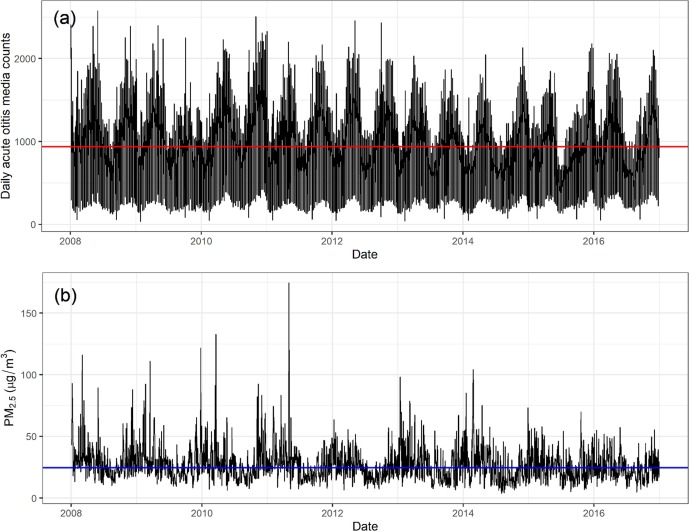하은희 (Eun-Hee Ha) 교수님의 연구 The impact of PM(2.5) on acute otitis media in children (aged 0-3): A time series study가 Environ Int에 출판되었습니다. 축하드립니다!
Journal DOI: https://doi.org/10.1016/j.envint.2020.106133
Abstract
Background Experimental studies have reported that air pollution could make the middle ear more susceptible to infections. However, the associations between specific air pollutants and AOM were inconsistent in previous epidemiologic studies. This study aimed to investigate the association between PM2.5 exposure and the AOM events in seven major cities in the Republic of Korea. Methods We performed a nationwide time series analysis of children aged 0–3 years living in seven major Korean cities between 2008 and 2016. We used a quasi-Poisson regression to estimate the short-term association between incident AOM and the 5-day moving average of particulate matter smaller than 2.5 μm (PM2.5) for each city. Then, we conducted a meta-analysis to combine the city-specific associations. The exposure unit was 10 μg/m3, and all models were adjusted for time, daily mean apparent temperature and day of the week. Results A higher risk of incident AOM was significantly associated with higher 5-day moving PM2.5 averages in five cities, except for Gwangju and Ulsan. The combined relative risk (RR) was 1.011 (95% confidence interval [CI]: 1.008, 1.014). In the subgroup analysis by season, PM2.5 exposure was significantly associated with incident AOM in the warm season (RR: 1.016, 95% CI: 1.009, 1.022). In addition, among children with a URI history within 4 weeks, children with a more recent URI history were more sensitive to the impact of PM2.5 exposure on incident AOM (RR for 1st week: 1.017, 95% CI: 1.011, 1.024; RR for 2nd week: 1.013, 95% CI: 1.008, 1.018; RR for 3rd week: 1.008, 95% CI: 1.003, 1.013; RR for 4th week: 1.005, 95% CI: 1.001, 1.009). Conclusion Higher PM2.5 concentrations are associated with a higher risk of incident AOM, particularly in the warm season and children with recent URI history. Our findings could have important implications for preventing AOM in children.


